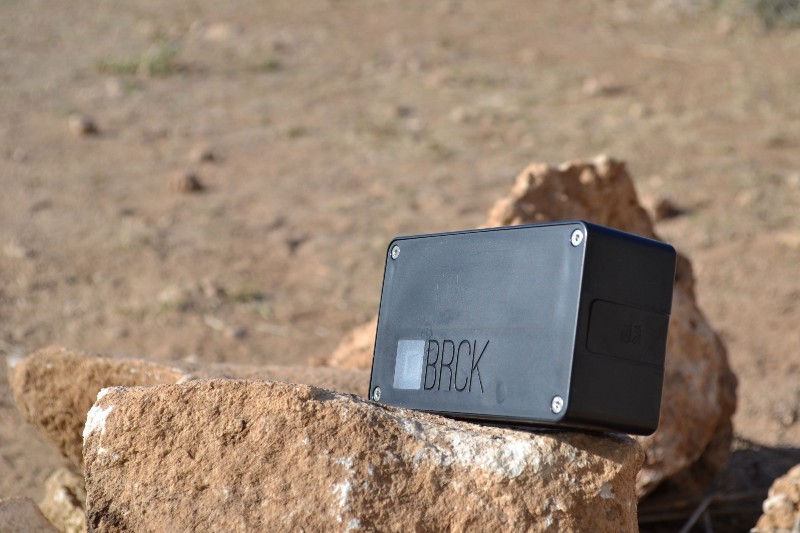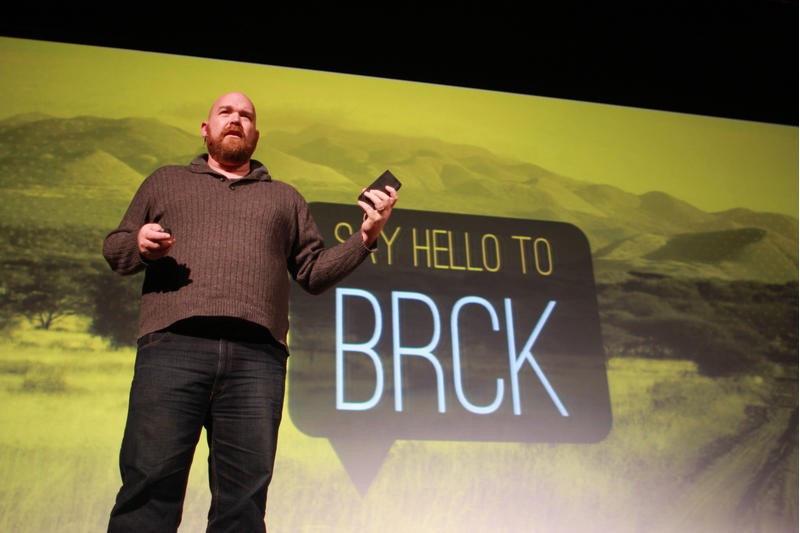

It felt like any other day as Erik Hersman sat in a darkened conference room in Lagos, Nigeria. “During the event we were experiencing the worst kind of Internet issues, from unreliable service providers to power problems,” he grumbled.
On the other side of the continent members of the iHub–Nairobi’s much-lauded innovation space–were turning to 3G dongles to get around a host of problems they were experiencing there, too.
These problems were not only troubling users in Lagos or Nairobi, but were crippling businesses across the continent. “It was becoming obvious that if we didn’t fix this then it was unlikely anyone else would,” Hersman said as he showed me BRCK, the made-in-Africa-for-Africa battery-powered router, recently launched in Nairobi, which he hopes will see that these kinds of connectivity issues become a thing of the past.
Described as the “go anywhere, do anything, self-powered, mobile Wi-Fi device,” BRCK is a sturdy, lightweight wireless router, modem, and smart battery system all rolled into one simple brick-like box that works anywhere.
Born in Sudan to missionary parents, Hersman spent all of his childhood in East Africa and most of his adult life there, too. Growing up and then working on the continent gave him a unique insight into what works and what doesn’t, and it shows. “I had something of a history in starting companies, running my own website development business whilst blogging my interest in Africa and technology,” said Hersman.
The Kenyan election crisis in 2008 was a turning point for him. Along with a few fellow Kenyans, Hersman conceived and built Ushahidi, one of the earliest crowdsourcing tools, which was used to map the violence taking over the country. Today it is being used in over 130 countries and has been central in helping to coordinate the international community’s response to natural disasters such as the Haiti earthquake in 2010. Ushahidi is seen as a rare technology success story from the continent.
Not to rest on laurels, Ushahidi became the catalyst for a number of other projects. “We were building some pretty cool technology with Ushahidi, but it was increasingly obvious how hard it was for other Kenyan startups to get space to develop and then build out their ideas. That’s where the idea of the iHub was conceived,”said Hersman.
It’s a nice twist that BRCK is the first product he and his team have built based out of the innovation space Hersman helped create, and that Ushahidi money–and then later crowdfunding and angel investors–helped seed it.
One thing I was particularly curious about was why the larger global technology firms didn’t see the opportunity first and beat BRCK to market. Surely, when it comes to innovation, “West is best,” right?
As always, Hersman had a few thoughts. “Firstly, the best solutions come from your own problem set and your own environment, and this was our problem,” he said. “Secondly, most of the people who make routers and modems live in places with great infrastructure. We don’t. And perhaps more crucially, costs are coming down to a level where people like us can seriously entertain the idea of building our own hardware. What we’re now beginning to witness, I believe, is the beginning of the end of our reliance on high-end brilliant technology designed and built in the West that doesn’t work where we live.”

The BRCK team sees its product not as a hand-me-down technology–as so many products have been–but a new product made of old technology that is fit for their environment and needs. It was a huge effort and not one short of challenges. Never having built anything like this before, I was interested in what Hersman and his team learned from the experience.
“First off, you’ve got to deal with the fact that you can’t just ship a component overnight. Instead, it can cost over $100 for shipping and duty, plus it can take a week to get to you. It means the process of rapid prototyping is much slower, and you really pay the price if you mess up your orders,” he shared.
“Then there’s the highly trained RF and electrical engineers that you find in the U.S. and E.U. who aren’t as available here. They’re around, but you have to search hard for them. The talent pool isn’t as deep, even though the excitement and interest might be there. On the plus side we’re now seeing a whole generation of engineers who are just getting started, but they’re not ready yet.”
There’s a certain irony that the BRCK team was also constrained by the very challenges it was trying to overcome–the infrastructure itself. Power outages and breakages in the cables that fed them the internet were almost everyday occurrences. “Of course, we like to think we designed better because we were dealing with it every day, so in this case I think the constraints worked in our favor,” Hersman said.
BRCK has only just started shipping–in 45 countries, to be precise–but the team is already looking at ways to improve the product. Toughening it up, making it faster and improving battery life beyond the already-impressive eight hours are all on the list. And on top of that there are a number of other BRCK-related activities in the pipeline.
“We’re excited about MRTR–pronounced “‘mortar,’ as in bricks and mortar–which are hardware extensions to BRCK which can be attached like [a] Lego. And we’re working on a few things with the Raspberry Pi, Arduino, and other third-party sensors, which we think will be very interesting to a lot of people, particularly given the growing interest in the Internet of Things,” said Hersman.
Ushahidi, the iHub, and now BRCK are all touted as exciting, emerging examples of African innovation. Hersman isn’t a fan of the word, though. “I don’t think [of] what I’m doing as building “‘innovative anything.’ What I do is solve problems, sometimes creatively, sometimes by inspiring others to help solve them, and sometimes by just being more stubborn and hard-headed than anyone else.”
Hersman is the first to admit that he’s not happy with Africa’s current situation, and he’s shown he’s not willing to stand by and let it continue. Problem solvers the world over could learn a thing or two from his approach, whether or not they see their work as “innovative” or “something else.”


How We Get To Next was a magazine that explored the future of science, technology, and culture from 2014 to 2019. This article is part of our The Internet section, where we report on the past, present, and future of the information superhighway. Click the logo to read more.
